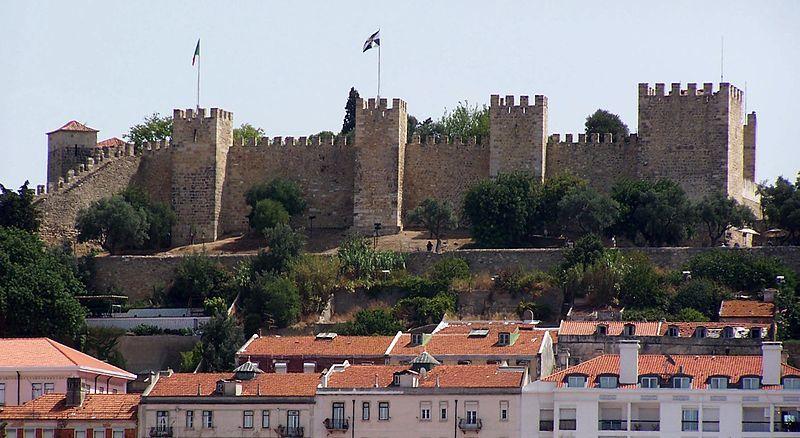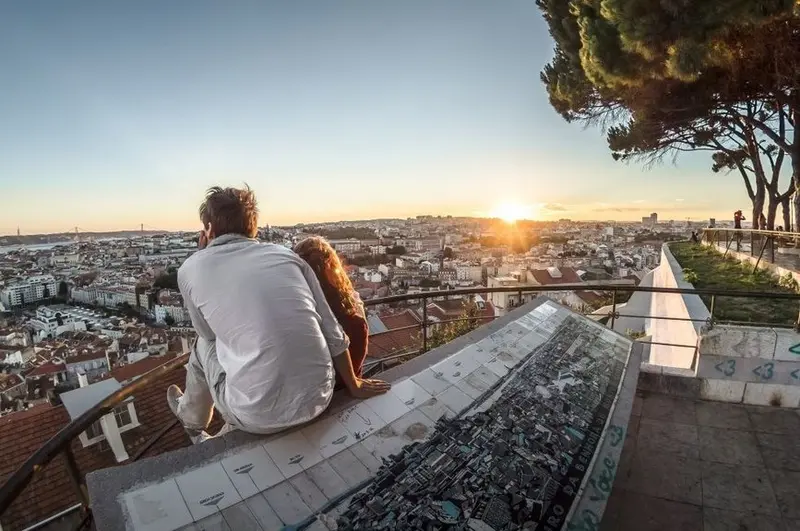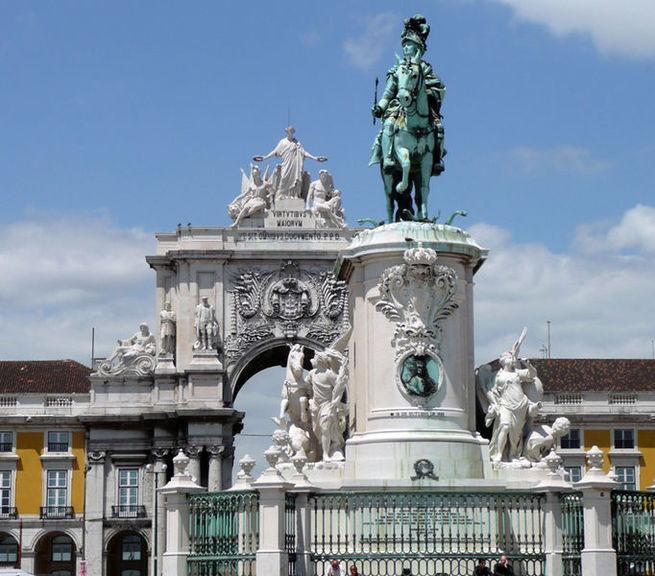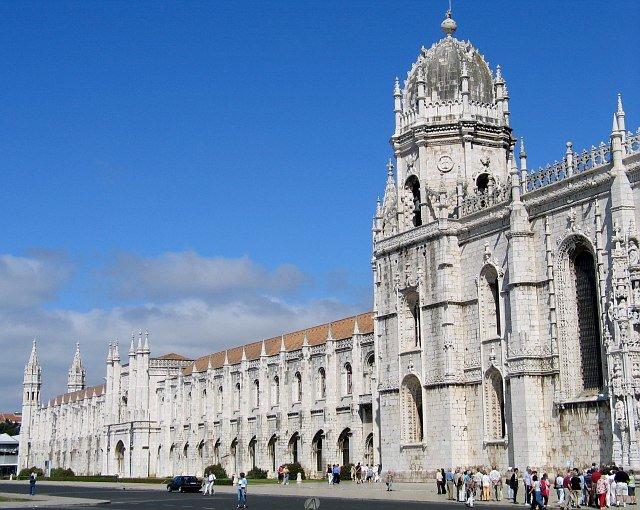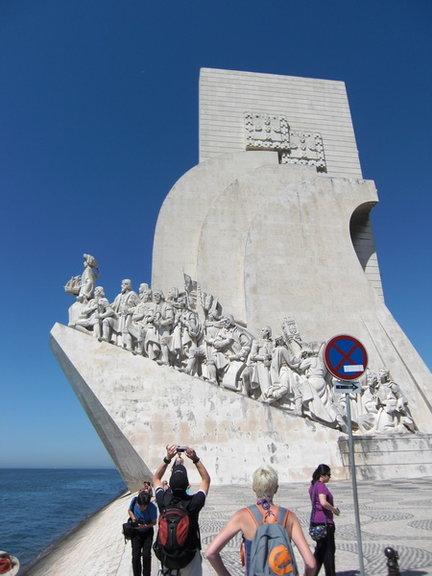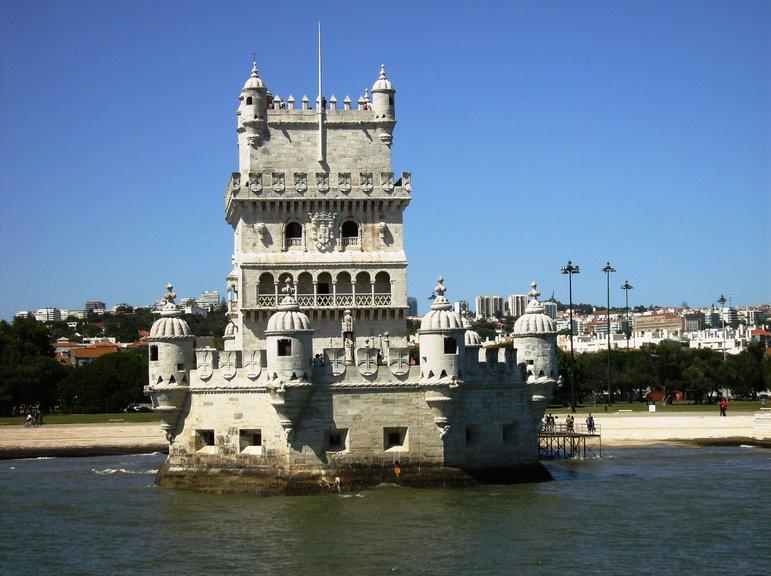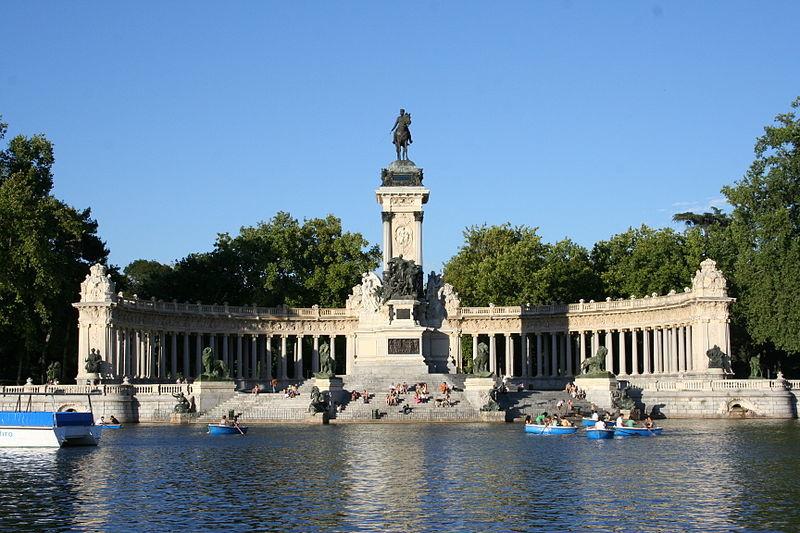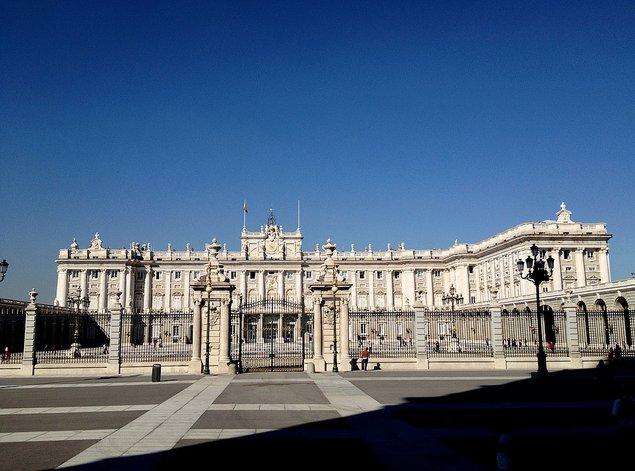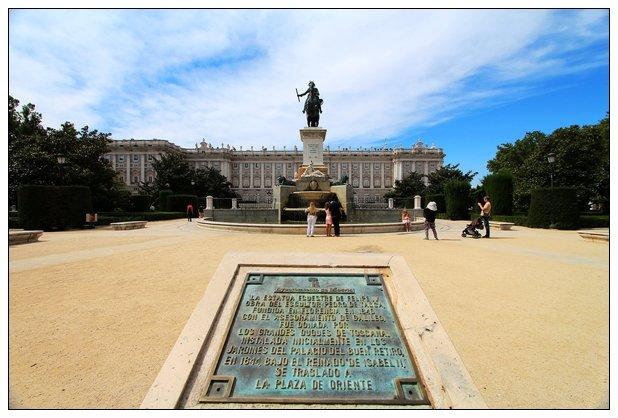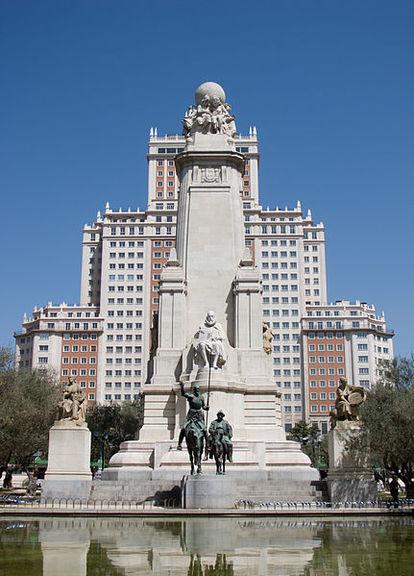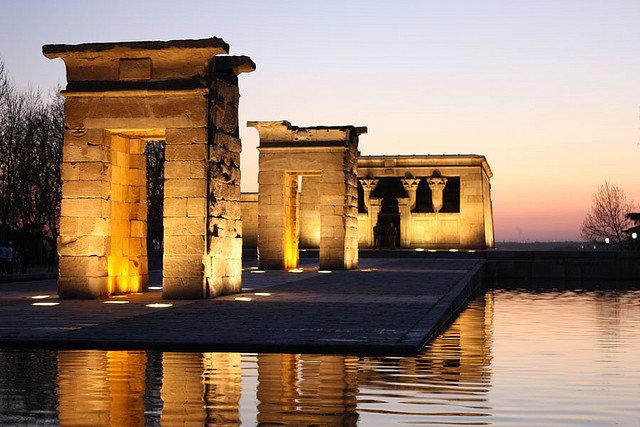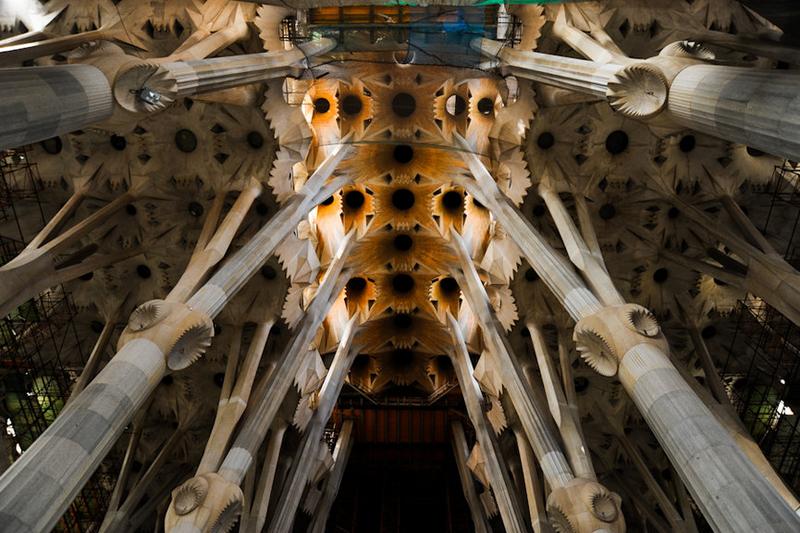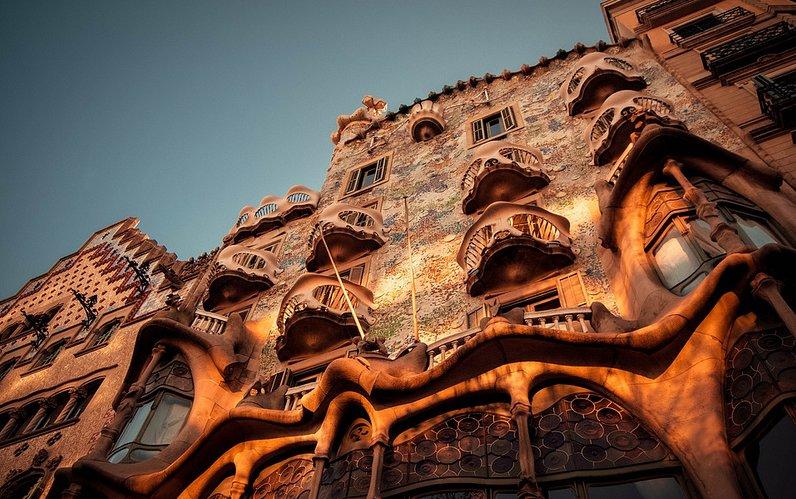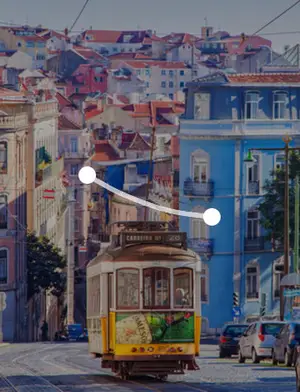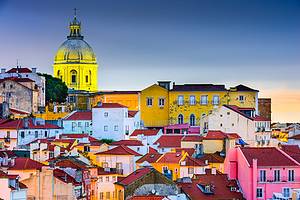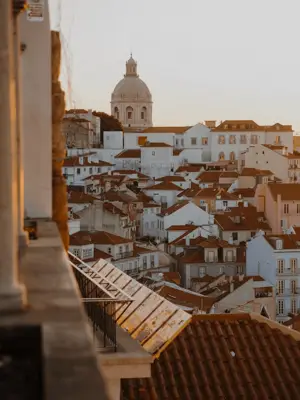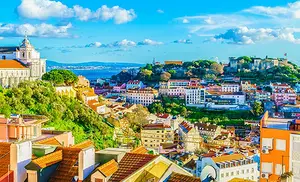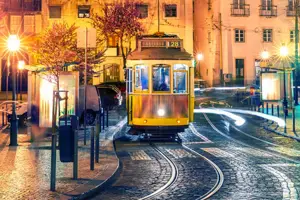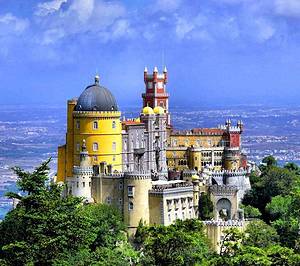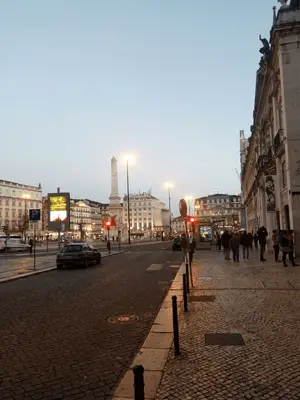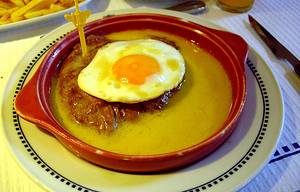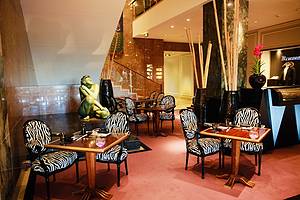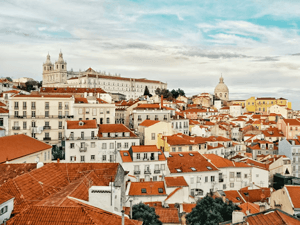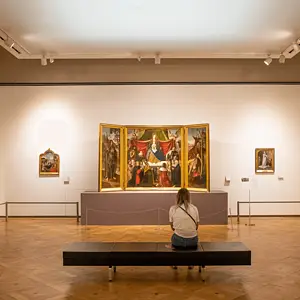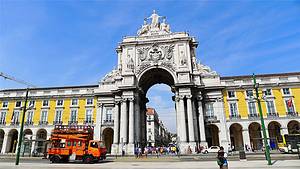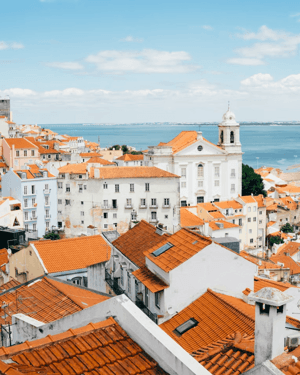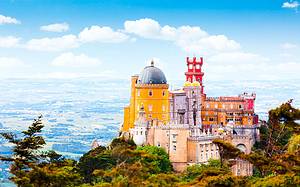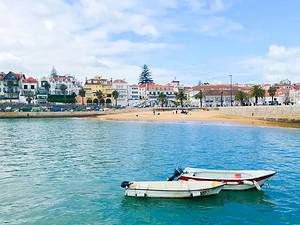Portugal-Spain three city travelogue
4 cities |
25 attraction(s) |
total distance 79
km
 TIPS
TIPS
Day1
Day2
Day3
Day4
Day5
Day6
Day7
Day1: Lisbon
3 attraction(s) ·
5 km
1
Another important historical site in the Alfama area is one of the oldest buildings in Lisbon and one of the most significant attractions. The castle is situated at the highest point of the Alfama area and still retains a neighborhood called Santa Cruz. The castle's observation deck offers an excellent view of the Lisbon cityscape and the Tagus River, making it a great choice for watching the sunset. Human traces of habitation can be found here as early as the 6th century BC, with Phoenicians, Greeks, Carthaginians, and other civilizations leaving their marks. The castle has a long history, originally built by the Celts in the 5th century, and later fortified by the Moors and Christians, and it was even transformed into a royal palace at one point. Occupying an area of 6,000 square meters, it was an important strategic vantage point and has been successively occupied by rulers of different eras. The touching story of the Crusaders' assault on the castle has been passed down through the ages, with the legend of knight Martim Moniz seeing a small opening in the castle gate and using his own body to prevent it from closing, allowing the army to successfully enter the castle and drive out the Moors.
The castle also played many significant roles in history, such as being the place where the kings received navigational heroes. It was not until the early 16th century that King Manuel I built another palace called Palácio Ribeira by the Tagus River, gradually shifting the castle from the historical stage. In 1531, an earthquake destroyed many parts of the castle, and successive kings ordered its reconstruction, but it was never truly completed. The castle was also used as a military barracks and prison. The devastating earthquake of 1755 accelerated the castle's destruction, but after the earthquake, the clever Portuguese people learned their lesson and built the nation's first astronomical observatory on a high tower within the castle. It wasn't until 1940 that the castle underwent thorough restoration and opened to visitors in its present form. Inside the castle, there are 11 towers and a dried-up moat, with many remnants worth exploring. Collapsed city walls tell ancient stories. Notable attractions include the Tower of Ulysses (Torre de Ulisses), where a telescope allows you to observe Lisbon in 360 degrees. There's also Casa Ogival, which offers a view of five famous pointed arches and is aesthetically pleasing in terms of architectural beauty. The multimedia screening room (Olisipónia) in the tower vividly recounts the history and culture of Lisbon. Furthermore, this place was once the site of Casa Pia, an orphanage that was exposed by the local Portuguese television station in the early 21st century as the largest child abuse scandal in history.
2
km
2
Lisbon offers stunning views from its highest points, especially during sunset.
3
km
3
Commerce Square (Praça do Comércio) is a square in the capital city of Lisbon, Portugal, adjacent to the Tagus River. It is also known as Palace Square (Terreiro do Paço) because the Ribeira Palace, which was destroyed in the 1755 earthquake, was once located here. After the earthquake, the Marquis of Pombal completely redesigned the square as part of the downtown area of Pombaline Baixa. Due to the construction of the new Ribeira Palace by King Manuel I outside the city walls along the Tagus River, the Ribeira area began to develop in the early 16th century. The area further developed with ports, shipbuilding facilities, the House of India (Casa da India), and other administrative buildings for trade between Portugal and other European countries, as well as Africa, Asia, and the Americas. The Lisbon earthquake of November 1, 1755, triggered a tsunami and fires that destroyed much of Lisbon, including the Ribeira Palace and other buildings along the river. Marquis of Pombal coordinated large-scale reconstruction efforts, but the palace was not rebuilt.
Day2: Lisbon > Sintra
4 attraction(s) ·
44 km
1
Jerónimos Monastery is a magnificent building that took 100 years to complete during the golden age of Portugal. It is considered the most splendid and grand monastery in Portugal. King Manuel I officially began its construction in 1501, allocating a significant portion, equivalent to 5% of the revenue from Asian-African trade each year, which was around 70 kilograms of gold. The monastery was built using a Portuguese special stone called "golden limestone" and features an astonishing facade that stretches over 300 meters long. It combines Gothic and Renaissance styles perfectly and is regarded as a "treasure" of Manueline architecture, unique and impossible to replicate in history. It held significant religious and political importance at the time, dedicated to the Virgin of Bethlehem and the ancestors of the Manueline dynasty. Many historically important figures, such as the renowned Portuguese poet Camões, are buried there. Furthermore, due to its location near the seaport of the Portuguese capital, it is considered a symbol of Portugal. Notably, the historic signing of the Lisbon Treaty, a milestone in the history of European Union development, took place here in 2007. Along with the Belém Tower, it is recognized as a UNESCO World Heritage Site and one of the seven wonders of Portugal. There are many more stories about the monastery, including the devastating earthquake of 1755, which destroyed the ancient city of Lisbon. As the earthquake occurred on a Sunday morning, many worshippers perished in the churches during mass, but miraculously, the entire royal family who were praying at the monastery remained unharmed, adding a more sacred aura to this already significant monastery.
4
km
2
Monument to the Portuguese Superhero League. Led by Prince Enrique, holding a small Portuguese caravel in his hand, symbolizing multiple meanings. Without the Prince Enrique School of Navigation, there would be no past glory of Portugal. This monument, built in 1960 to commemorate his 500th anniversary of death, is shaped like a caravel, highlighting its historical importance. It is also commonly known as the Monument to the Great Age of Exploration. The heroes depicted on the monument include Vasco da Gama, Pedro Álvares Cabral, Ferdinand Magellan, and others who were regarded as superheroes in that era. It also pays tribute to national heroes like Camões who held significant positions in Portuguese history. The monument is 52 meters high, with 7 floors containing various functional rooms. Visitors can also climb to the highest point to enjoy the surrounding scenery and the view of the harbor.
5
km
3
Belém Tower (English: Belém Tower, Portuguese: Torre de Belém) is a five-story defensive structure located in the Belém district of Lisbon, Portugal. It was built between 1514 and 1520 during the reign of King Manuel I to defend the port in Belém and the nearby Jerónimos Monastery. The tower is dedicated to the patron saint of Lisbon, St. Vincent. Over time, it has served as a customs house, a telegraph station, a lighthouse, and also marked the starting point for explorers. During the Spanish rule, it was used to imprison important political prisoners. The tower features a gloomy dungeon converted from a warehouse, and it currently houses 16th-century cannons and other artifacts. In 1983, it was officially recognized as a UNESCO World Heritage site and in 2007, it was named one of the Seven Wonders of Portugal. Belém Tower is divided into two parts: the tower body with four arched rooms and the bulwark with numerous gun emplacements. Crossing the drawbridge and passing through the main gate leads to the interior of the bulwark. There are 16 gun positions on the walls for mounting cannons to defend against enemies. The central part of the floor is raised while the edges are lower, allowing for the protection of the cannons and quick draining of water. The roof features a Gothic-style rectangular skylight for ventilation to disperse the smoke from firing cannons. Beneath the bulwark's floor, there are storage rooms, with the largest one accessible from the northern staircase. Initially used for storing supplies, these rooms later became dungeons. On the right side of the entrance, a steep staircase leads to the platform on top of the bulwark. The polygonal platform has six sentry boxes on its corners, each with an observation window and a pepper pot-shaped roof. In the center of the platform, there is a railing surrounding the courtyard below. To the south of the railing, there is a statue of Our Lady of Good Success, also known as the Grape Virgin. The tower faces south, and the entrance is located on the platform of the bulwark. The south facade of the tower is adorned with exquisite stone carvings. The balcony on the second floor features decorative friezes and railings, with a large Royal Shield of King Manuel I above it. This front side, adorned with royal symbols and Manueline elements, received praise from travelers and sailors of the 16th century. Ascending the staircase along the right side leads to the first room inside the tower, known as the Captain's Room. There is an octagonal opening in the floor used as a water tank for collecting rainwater. The ceiling of the room is coated with lime. Entrances to the sentry boxes are found at the northeast and northwest corners. On the left side, there is a spiral staircase that leads to the upper rooms. The name of the room possibly originates from its previous use as the captain's office. In 1521, Gaspar de Paiva worked and exercised administrative and judicial powers here. Going up the spiral staircase leads to the second room, known as the King's Room. This room opens to a balcony on the south side, with eight circular holes in the floor for defenders to drop stones and boiling oil. The room above is called the Audience Room, which has two large windows and a fireplace between them. The topmost room is known as the Chapel, featuring a fan-shaped vaulted ceiling decorated with Manueline symbols. Overall, this room is quite simple in design.
36
km
4
Cape Roca is a cape in Portugal, adjacent to the Atlantic Ocean. It is a narrow cliff with an elevation of about 140 meters, located at the western end of the Sintra Mountains. It is situated at 38 degrees 47 minutes north latitude and 9 degrees 30 minutes west longitude, approximately 40 kilometers from Lisbon. Cape Roca is the westernmost point of Portugal and the westernmost point of the entire Eurasian continent. A lighthouse and a cross facing the ocean have been built on the cliffs of Cape Roca. The monument is inscribed with the famous Portuguese phrase "Land ends here, sea begins" (Onde a terra a caba e o mar começa). Cape Roca has been rated as one of the "50 places in the world worth visiting" by netizens.
Day3: Madrid
3 attraction(s) ·
4 km
1
Plaza de Cibeles, also known as Goddess of the Earth Square, is a square in the capital city of Madrid, Spain. It is surrounded by neoclassical buildings, marble sculptures, and fountains, and is a symbol of Madrid. The Cibeles Fountain on the square depicts the fertility goddess Cybele sitting on a chariot pulled by two lions. The fountain was built during the reign of Charles III and was designed by Ventura Rodríguez between 1777 and 1782. The sculpture of the goddess and the chariot is the work of Francisco Gutiérrez, while the lions were created by Roberto Michel. Originally, the fountain was located near Buenavista Palace, but it was moved to the center of the square in the late 19th century. Prior to the 19th century, the Cibeles Fountain and the Neptune Fountain in the south of Canovas Square faced each other. However, the city council decided to have both fountains face the city center. Chinese fans are familiar with this square because whenever Real Madrid wins a major match, they come here to celebrate, turning it into a paradise of joy for the fans.
4
km
2
Parque del Buen Retiro
Retiro Park, located in the center of Madrid, occupies an area of 118 hectares and has nearly 15,000 trees. It is a popular place for both travelers and locals to enjoy leisure time. The park was built in 1630 as a vacation spot for the king and has since been opened to the public. Notable attractions in the park include the Statue Avenue, Puerta de España (Gate of Spain), Rose Garden, Monumento a Alfonso XII (Monument to Alfonso XII), and Palacio de Cristal (Crystal Palace).
1
km
3
The Crystal Palace (Palacio de Cristal) is a glass palace built in 1887. It was primarily constructed to showcase flora and fauna from the Philippines.
Day4: Madrid
4 attraction(s) ·
6 km
2
The Oriental Square is a garden-style square in the capital city of Madrid, Spain. Its history can be traced back to the 19th century during the reign of Joseph Bonaparte. On the west and east sides of the square are the Royal Palace of Madrid and the Royal Theatre respectively. On one side of the Royal Theatre, a series of small bars are arranged in a semi-circle. Inside the garden, there are fountains and a statue of King Philip IV on horseback designed by Velázquez. The Oriental Square, located in front of the Royal Palace of Spain, creates a beautiful scenery in combination with the palace.
2
km
3
Plaza Mayor, also known as Mayor Square, is the central square of the Spanish capital Madrid. It is located near the Puerta del Sol square and was built during the Habsburg dynasty. It has a rectangular shape, measuring 129 meters long and 94 meters wide, and is surrounded by three-story residential buildings with 237 balconies facing the square. It has a total of 9 entrances. The main building of Plaza Mayor is Casa de la Panadería (House of the Bakery), which serves municipal and cultural functions and is adorned with murals on its exterior walls.
2
km
4
The Prado Museum is one of the best museums in the world and is one of the most visited attractions in Madrid. It houses the finest works of Spanish art from the 16th to the 19th century, including works by Velázquez, Goya, and Greco, as well as a large collection of works by foreign Renaissance painters such as Tiziano from the Venetian school, Rubens from the German Baroque school, and Hieronymus Bosch from the Dutch Surrealist movement. The museum currently has a total collection of 27,509 artworks, including 7,825 oil paintings, which is quite impressive.
Unlike other large European museums like the Louvre in Paris and the National Gallery in London, which collect works from various eras and different artistic styles, the Prado Museum initially received donations of artworks from the royal family who were art enthusiasts, so the styles are more similar. The museum was commissioned to be built by King Carlos III in 1786 and opened to the public in 1819. Famous artists such as Monet, Renoir, Lautrec, Picasso, Matisse, and Dali have visited the museum and have been influenced by its painting styles.
Day5: Madrid
4 attraction(s) ·
11 km
1
At the end of Gran Via, you can see a square with a central fountain and two tall buildings next to it. This is the Plaza de España. The most prominent feature in the center of the square is the monument to Cervantes. The monument was built in 1916 to commemorate the 300th anniversary of the death of Cervantes, the greatest writer in Spanish history. In front of the statue of Cervantes are the characters Don Quixote and Sancho Panza from his famous work "Don Quixote."
The pure white high-rise building on the north side of the square is the Madrid Tower, completed in 1957. It stands at a height of 142 meters and was the tallest building in Europe for the next decade until it was surpassed by the South Tower in Brussels, Belgium (150 meters) in 1967. The tall building behind the monument to Cervantes is the Spain Building, and its design matches the shape of the monument in order to not block the sunlight from reaching it.
1
km
2
The Temple of Debod is an ancient Egyptian temple that was relocated to Madrid. The temple was originally built in the 2nd century BC and was located 15 kilometers south of Aswan, Egypt, dedicated to the goddess Isis. In 1960, many monuments and archaeological sites were at risk due to the construction of the Aswan High Dam. In response to international appeals for protection, UNESCO, and as a gesture of gratitude for Spain's assistance in preserving the Abu Simbel temples, the Egyptian government donated the temple to Spain. The reconstruction of the temple in Madrid was completed in 1968.
4
km
3
Museo Nacional Centro de Arte Reina Sofía
The Queen Sofia Arts Center houses nearly 18,000 art pieces, ranging from the 19th century to the present. The most important works come from 20th-century Spanish painters such as Picasso, Dali, and Miro. The most worth-visiting piece is Picasso's "Guernica," a massive painting measuring approximately 8 meters long and 4 meters wide. Created in 1937, it depicts the scene of the small Basque town of Guernica, which was destroyed by the German and Italian air forces during the Spanish Civil War. It is recommended to allocate at least 2 hours for the visit.
6
km
4
Gran Vía is a luxurious and upscale shopping street in the center of Madrid, the capital of Spain. It stretches from Alcalá Street in the east to Plaza de España in the west. It is one of the city's most important shopping areas, with numerous hotels and large cinemas, and is known for its large buildings. Most of the theaters have now been replaced by shopping malls. In the mid-19th century, urban planners in Madrid decided to build a new thoroughfare connecting Alcalá Street and Plaza de España. This project involved the demolition of many buildings in the city center and was called the "axe on the map." After several decades of planning, construction had not yet begun, so the media sarcastically referred to it as the "Great Road" (Gran Vía). Finally, it was approved in 1904 and construction began two years later. The last section of the street was completed in 1929.
Day6: Barcelona
3 attraction(s) ·
7 km
1
Park Güell, also known as Güell Estate, is an early work of Gaudí. It has a strong Oriental influence in the exterior, with windows designed for ventilation in desert-like regions, the use of bricks instead of stones in geometric wall formations commonly seen in Moorish-style architecture, and decorative ceramic tile accents. As part of Antoni Gaudí's works, it is listed as a UNESCO World Heritage site. Gaudí showcased his extraordinary talent in landscape planning, with the famous lizard sculpture at the main entrance and a surrealistic paradise of vibrant colors. His former residence, the pink house, is now a museum.
6
km
2
It is located in the El Gotic old town area and consists of five beautiful mansions. This was once Picasso's residence. Since he gained fame in France, his best and most mature works are mostly scattered abroad. It was only after he became famous that Spain made a full effort to collect his early works and paintings. The museum houses over 3,500 works by Picasso, including his original handwritten manuscripts, many of which were donated by the artist himself in 1970, including early works and even childhood paintings.
1
km
3
Gothic Quarter is one of the four districts in the old city of Barcelona. Many buildings date back to the Middle Ages and some can be traced back to ancient Roman times. The old cathedral and the royal palace in the historic center are still in use and well preserved. Highlights of the Gothic Quarter include the Santa Maria del Mar church and several restored palaces and mansions on Montcada Street. The area also features remnants of the Roman city walls. The Gothic Quarter is small and perfect for walking tours.
Day7: Barcelona
4 attraction(s) ·
5 km
1
The Sagrada Familia is the symbol of this city, attracting all the attention of those who come to this city. Inspired by nature, such as caves, mountains, flowers, and animals, the overall design of the Sagrada Familia is still incomplete due to lack of funds. Only tickets and donations are used to cover the construction costs. The top of the towers is covered with scaffolding. It is said that the Sagrada Familia, which has been standing for a hundred years, will be completed in 2026. Despite this, the people of Barcelona are not anxious or impatient; instead, they wait calmly and patiently. In 1926, on a summer night, Gaudi passed away in a car accident, and the Sagrada Familia was his final gift to the world. After that, Gaudi rests in the underground crypt of the Sagrada Familia, which he designed and is still unfinished, quietly waiting for the day this great project is completed.
In 1872, Josep Maria Bocabella, a bookseller from Barcelona, returned from a trip to Italy and conceived the idea of building a penitential church where people could pray to God and seek forgiveness. The construction of the Sagrada Familia began in 1882 and was taken over by Gaudi at the age of 31 in 1883. He designed the entire church as a "Bible" that could be carved in relief, depicting the birth of Jesus, his passion, and the glory of God on the three facades of the church.
The Passion facade is used to convey the pain that Jesus suffered under suffering and torment. It is entered through the carved door of the Passion with coded inscriptions. The interior design of the church is unique, consisting of curves and surfaces, and various combinations of spirals, cones, and parabolas create a rhythmic and dynamic architectural style. All the columns resemble tree trunks, branches, and tree eyes, inspired by nature. The main body of the church is predominantly Gothic in style but exhibits the "Gaudí touch." Plain, pale yellow and milky-white columns and walls create one wonderful space after another, outlined by black iron curves. Slow down, appreciate it carefully, and the colors become a subtle backdrop. Looking up at the top of the church, sunlight shines through several small openings, casting shadows, and tall tree trunks extend branches to support the towering spires. Stained glass windows reflect colorful flowers, and the entire church is filled with a dreamlike palette, like a kaleidoscope world.
Take the elevator of the Nativity facade and climb a few more steps to reach the viewpoint at the top of the church. The beautiful views of Barcelona unfold before your eyes. The Tower of Jesus, 170 meters high, is adorned with vibrant Venetian mosaic, making it the tallest building in Barcelona. With its eight completed spires reaching the sky, its towering presence can be admired from anywhere in the city.
3
km
2
Casa Milà, also known as La Pedrera, is the last private residence designed by Gaudi. Its distinctive features include three undulating walls, balconies with twisted iron railings and plates, and large windows. In 1986, it was purchased by Caixa de Catalunya bank and underwent extensive renovations. The ground floor now serves as a venue for exhibitions hosted by the bank's foundation. The six floors, rooftop, and rooftop terrace of Casa Milà are open to the public. The rooftop chimney is particularly unique, and from the terrace, visitors can enjoy views of the city streets and the distant Sagrada Familia.
1
km
3
The interior design of the Batllo House also adheres to Gaudi's consistent style, with no straight lines and angles, only soft wavy curves. Every door, door handle, and chair is designed to conform to the human body's curves, and the small details throughout the house are awe-inspiring. The elegant wooden staircase specially designed by Gaudi for the Batllo House leads from the ground floor to the main hall on the second floor. The top decoration of the staircase railing is exceptionally exquisite, with a metallic thin sheet wrapped around an orange glass sphere. The ceiling of the main hall has a smooth surface that swirls outward, and the large windows with movable upper and lower frames provide a view of Gracia Avenue.
The design inspiration for the building's courtyard comes from the deep sea. In order to create a gentle light contrast, Gaudi used 15,000 blue tiles in five different shades, with the color becoming darker as it gets closer to the top of the building, as if gradually sinking into the depths of the ocean from the shimmering sea surface. In contrast to the colorful decorations and designs of the other floors, the loft's walls are in pure white tones, with a hanging chain arch structure as the basic architectural framework, reminiscent of the chest and ribs of a giant animal, while also providing temperature regulation for the entire building. The construction of the Batllo House came from a architectural design competition in Barcelona, inspired by the folk story of Saint George slaying the dragon. The large floor-to-ceiling windows on the second floor and the small decorative exterior columns resemble dragon's teeth. The design and arrangement of the roof tiles represent the dragon's fin, and the roof, with its scaled arches, resembles the dragon's back. The tall cross-shaped tower on the roof is like the holy sword inserted into the dragon's body. Another design inspired by natural objects is the spiral staircase leading to the roof. Gaudi favored this curved and natural rhythmic shape and gave the rooftop platform of the Batllo House a unique style. The surface of the chimney and ventilation ducts is made up of fragmented ceramic mosaics, which is a concrete manifestation of Gaudi's unique artistic style.
3
km
4
La Rambla is the wanderer street under Yu Qiuyu's pen. This can be said to be the most energetic street in Spain, gathering artists and tourists from all over the world. During the day, it is a paradise for street art and food (the famous La Boqueria market is located on the street), and after the midnight bell rings, it becomes a playground for Barcelona's nightlife (especially the Raval area to the west, with various themed bars).
La Rambla also connects Catalonia Square and the Mediterranean Bay. Walking along La Rambla to the beach under the invincible sunlight of the Mediterranean will make you experience the colorful and joyful Barcelona! If you can't stand the crowded people on the street, you can also choose a pleasing alley on the left or right to explore the historic Gothic quarter to the east or the La Raval area to the west, which is popular among hippies (usually with their own dogs). But remember to keep an eye on your wallet and valuables.
